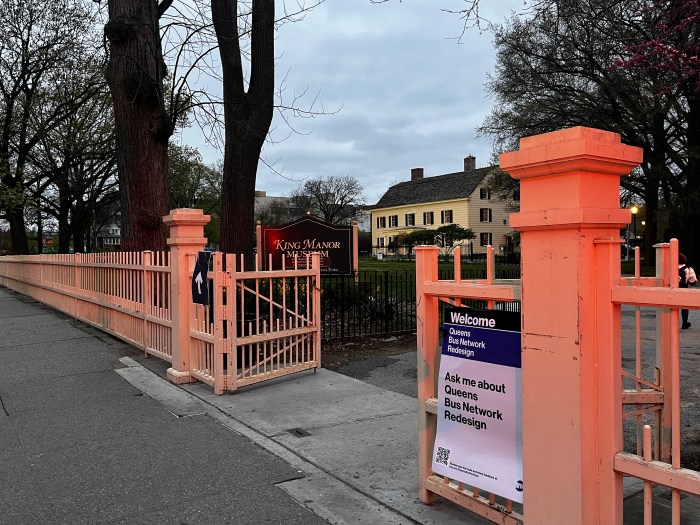By Dustin Brown
The state approved a $19 million plan to decontaminate the polluted Phelps Dodge site in Maspeth last month despite the community's insistence that a more comprehensive cleanup be performed.
“We expected it,” said Gary Giordano, the district manager for Community Board 5. “But we're still concerned about whether this is enough of a cleanup.”
The state Department of Environmental Conservation solicited public input last year on six alternative ways to clean the Phelps Dodge site, a 35-acre industrial property at 42-02 56th Rd. on the Newtown Creek that was subjected to decades of pollution.
Officials from the DEC and the state Department of Health decided Jan. 31 to move forward with the fifth option, which ranks second highest out of the six in both cost and thoroughness.
“It will be fully protective of public health and the environment,” said Peter Constantakes, a spokesman for the DEC.
The cleanup will be carried out at a cost of $19 million by the Phelps Dodge Corp., the mining and manufacturing company that contaminated the site during much of the last century. The property was purchased last year by a trucking company based in Maspeth, which will be required to abide by deed restrictions meant to prevent any use that could expose the contaminants.
But Community Board 5 passed a resolution in November calling on the state to require “the maximum cleanup” of the site, which would involve the removal of about 536,000 cubic yards of soil and cost between $104 million and $229 million, roughly 10 times more than the plan that was selected. It is known as the sixth option.
Constantakes responded that the sixth option would require an additional two years to complete, which coupled with the added expense did not justify its selection.
“The only difference with alternative six was the amount of soil to be excavated,” he said. “Six just would be probably a lot longer, a lot more expensive for minimal if any improvements in containing the contamination.”
Still, community board officials are also alarmed by the plan's failure to include the cleanup of the Newtown Creek, the adjacent body of water that was also polluted by Phelps Dodge's operations. DEC officials said the creek's cleanup was a separate project that would come in a later phase.
“When you consider the budgetary problems of the city, the state and the federal government, I'm certainly skeptical that any cleanup of Newtown Creek is going to take place in the not too distant future,” Giordano said.
Constantakes said the state is not yet ready to proceed with the creek cleanup because it is still gathering information about the contamination.
“It was decided previously that these would be split into two separate projects,” Constantakes said. “We can move forward with this one while we're still investigating the creek. Phelps Dodge will be held responsible for that one as well. It will just proceed at a later date.”
Testing of the site revealed the soil is contaminated with PCBs and metals, while inorganic metals and volatile organic compounds were found in the groundwater.
The proposal calls for the removal of contaminated soils from “hot spots” where toxin levels are highest, the placement of a cap over the entire property to contain the remaining soil, the extraction of groundwater, the creation of a containment and treatment system and long-term groundwater monitoring.
A copper smelting plant began operating as early as 1888 on the site, which Phelps Dodge purchased in the late 1920s and used for manufacturing until 1983, when it began removing equipment and clearing out the buildings. Although the U.S. Postal Service bought the site in 1986, Phelps Dodge was forced by a lawsuit to reacquire it in 1997 because of the contamination.
Reach reporter Dustin Brown by e-mail at Timesledger@aol.com or call 718-229-0300, Ext. 154.





























